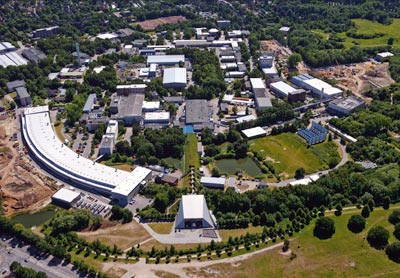Helmut Dosch describes the outlook for a bright future.

The fundamental questions about the origins and the future of the universe motivated me to choose physics as a course of study when I was 18 years old. My career as a scientist then led me to do research in solid-state physics and finally to investigate solid-state boundaries and nanomaterials using synchrotron radiation and neutrons. As a result, I have more or less closed a circle through my work at DESY. Here, both focuses of my research are united under one roof: particle physics with its fundamental questions, and structural research using cutting-edge light sources – both are fields that provide us with the knowledge base for technological and medical progress.
In an anniversary year, it is time not only to cast a backward glance but also to look forward at a clear objective: working together with all of the people at DESY to strengthen further the lab’s world-class international position. Now that HERA has been decommissioned, the focus for our facilities in Hamburg and Zeuthen clearly lies on the new and innovative light sources that are being realized in the Hamburg metropolitan region. “Insight starts here” is the slogan that we have chosen for DESY’s research – insight based on top-quality accelerator facilities and an important role as a partner in international projects.
With PETRA III, we have built a synchrotron-radiation source that will outperform all other competitors that use storage-ring technology. As the most brilliant light source of its kind, PETRA III will offer outstanding opportunities for experimentation. It will be of particular benefit to scientists who need strongly focused, very short-wave X-ray radiation to gain high-resolution insights at the atomic level into biological specimens or new high-performance materials. There is a tremendous demand from researchers aiming to develop new materials in the area of nanotechnology or new medicines based on molecular biology. A new interdisciplinary centre for structural systems biology is being set up in the direct vicinity of PETRA III.
This equips us perfectly to deal with the challenges of today and tomorrow. But the DESY tradition is also to keep in mind the challenges of the day after tomorrow – in other words, to build the light sources of the future. With the free-electron lasers, DESY has again assured itself a place in the world’s leading ranks when it comes to the development of a new key technology. On the basis of the superconducting TESLA technology, we have created light sources that are entering completely new territory by generating high-intensity, ultrashort, pulsed X-ray radiation with genuine laser properties. With this kind of radiation, scientists can for the first time observe processes in the nano-cosmos in real time. They can, for instance, view “live broadcasts” of the formation and dissolution of chemical bonds. That is why there is such a great demand for the FLASH free-electron laser at DESY. The expectations concerning the European X-ray laser, the European XFEL, which is now being built in the Hamburg area, are correspondingly high. DESY is playing a key role regarding this new beacon for science. Among other things, it is building the heart of the facility: the accelerator, which is approximately 2 km long.
International scope
In the fields of high-energy and astroparticle physics, DESY is facing the challenges of the future, which are becoming increasingly global; the era of national accelerator facilities is now a thing of the past. The field is dominated by internationally oriented “world machines” such as the LHC at CERN. So it is quite appropriate that the laboratory already has a long tradition of international co-operation across cultural and political boundaries. At its two locations in Hamburg and Zeuthen, DESY is involved in a number of major facilities that are no longer supported by one country alone, but are implemented as international projects. For example, DESY is participating in the experiments at the LHC and computer centres are being built on the DESY campus to monitor the data-taking and analysis. DESY is also playing a major role in the next future-oriented project in particle physics, the design study for the International Linear Collider.

DESY researchers are also active in astroparticle physics, in projects that include the neutrino telescope IceCube at the South Pole and the development work for a future gamma-ray telescope facility, the Cherenkov Telescope Array. With these two projects, the researchers are taking advantage of the fastest and most reliable messengers from the far reaches of the cosmos – high-energy neutrinos and gamma radiation – to investigate the early stages of the universe.
This broad international orientation is one element of the base that will continue to support DESY in the future. We will go on systematically developing the three main research pillars of DESY: accelerator development, photon science and particle physics. Another important element is the promotion of young scientists, an activity in which DESY engages intensely in co-operation with universities. Our goal is to be a magnet for the best and most creative brains and to co-operate with them in the future to do what we do best: ensuring that insight starts here.





